Pedaling along Ferrara’s ancient walls offers one of Italy’s most rewarding cycling experiences. The Renaissance-era fortifications now serve as a green ring around this historic city, creating a perfect path for visitors to explore.
The Este Walls form a nearly 9-kilometer circuit that showcases both impressive medieval engineering and lush biodiversity, making it an ideal route for cyclists seeking history and natural beauty in one journey.

I discovered this green soul of Ferrara last summer, when my rented bicycle became my trusty companion for exploring the city. The route winds through shady embankments and alongside the old moat, where the stonework of bastions, towers, and gates tells stories of the past.
What struck me most was how locals use this space – joggers, families, and fellow cyclists all sharing this green belt that embraces their city.
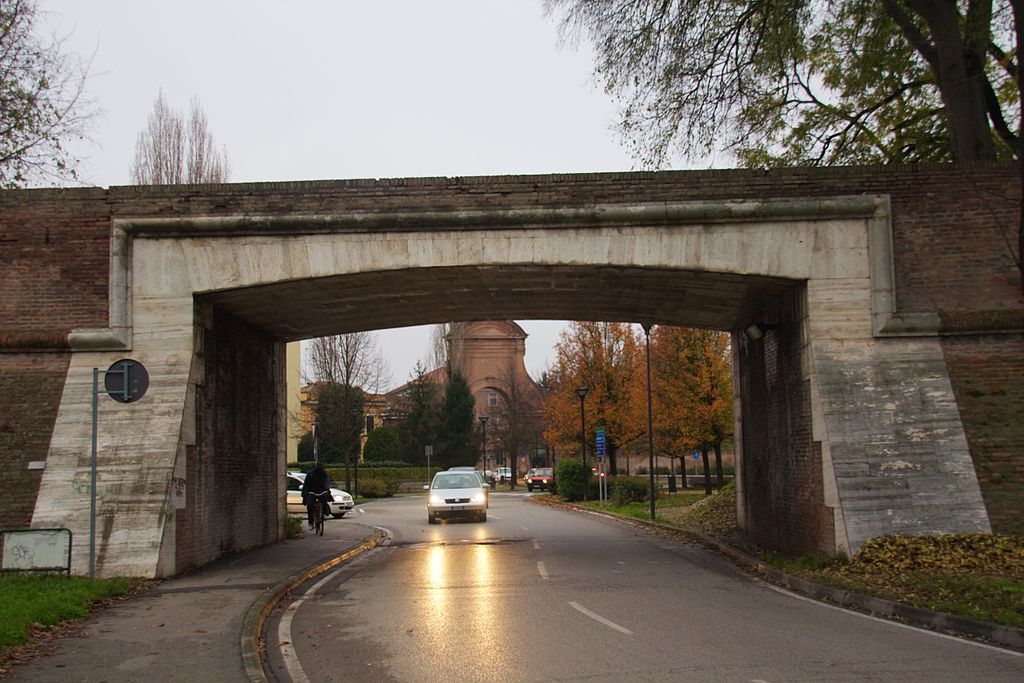
The walls offer a unique perspective on Ferrara that you can’t get by staying in the center. From elevated positions along the route, I caught glimpses of Renaissance palaces and medieval streets. Moments later, I found myself cycling through areas rich with plants and birds.
The path is mostly flat and well-maintained, making it accessible even if you’re not an experienced cyclist.
The Rich History of Ferrara
Ferrara’s story is deeply woven into the fabric of Italian history, transforming from a medieval trading post to one of the most splendid Renaissance cities in Europe. Its remarkable heritage includes impressive noble families, stunning architecture, and innovative urban planning.
Este Family Legacy
The Este family shaped Ferrara’s destiny for over three centuries, turning it from a modest settlement into a dazzling Renaissance capital. Marquis Niccolò III began this transformation in the early 15th century, but it was under Duke Ercole I that the city truly blossomed.
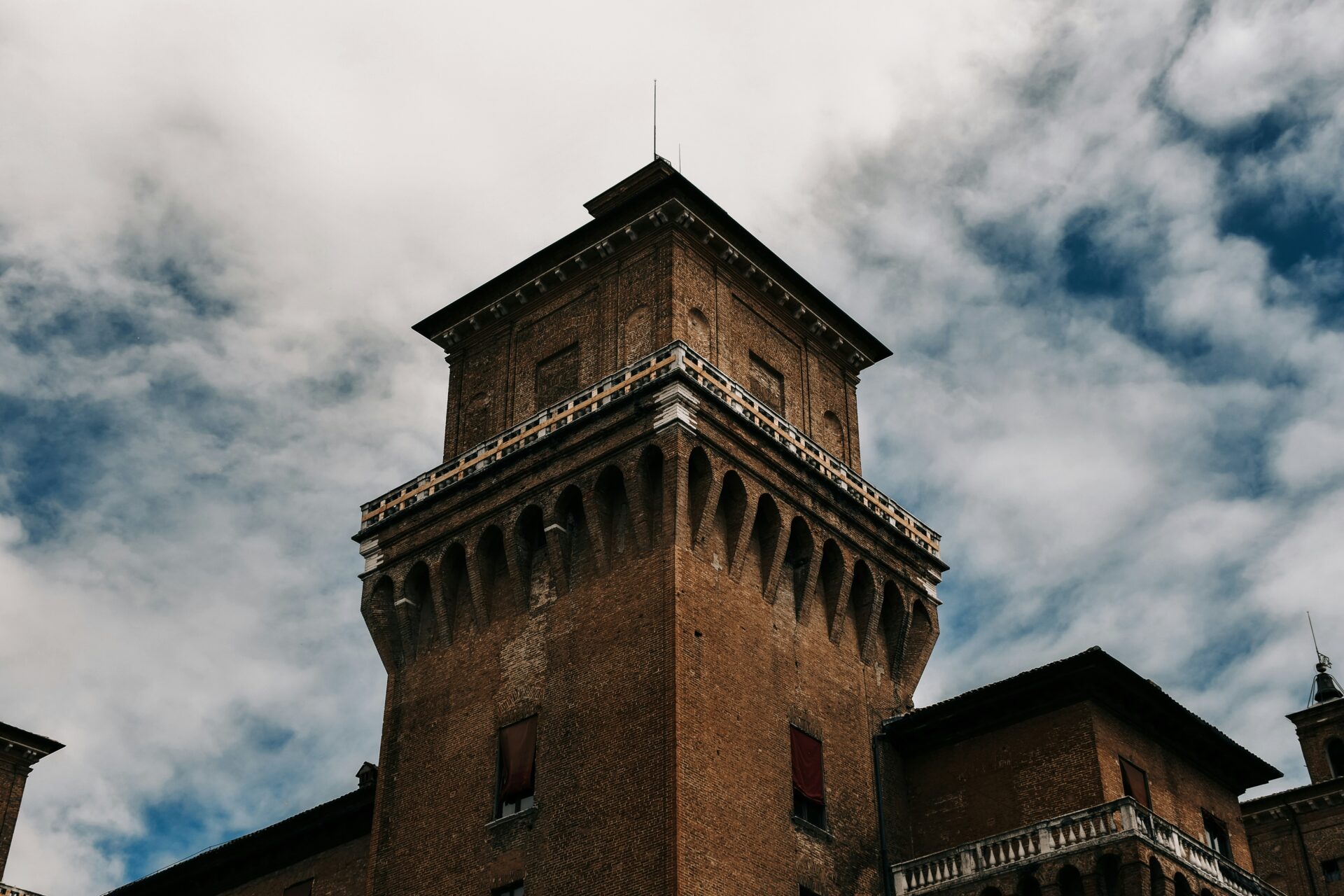
In 1492, Ercole I launched an ambitious expansion project known as the “Addizione Erculea” (Herculean Addition). This brilliant urban plan nearly doubled the city’s size and introduced revolutionary grid-pattern streets that influenced city planning throughout Europe.
The Este court attracted brilliant minds like poets Ludovico Ariosto and Torquato Tasso, and artist Dosso Dossi. Their patronage of arts and culture created a progressive atmosphere where creativity flourished alongside scientific advancement.
Ferrara During the Middle Ages
Ferrara’s origins trace back to a ford over the Po River, where a small settlement gradually developed into a thriving medieval community. By the 12th century, the city had established itself as an important commercial hub.
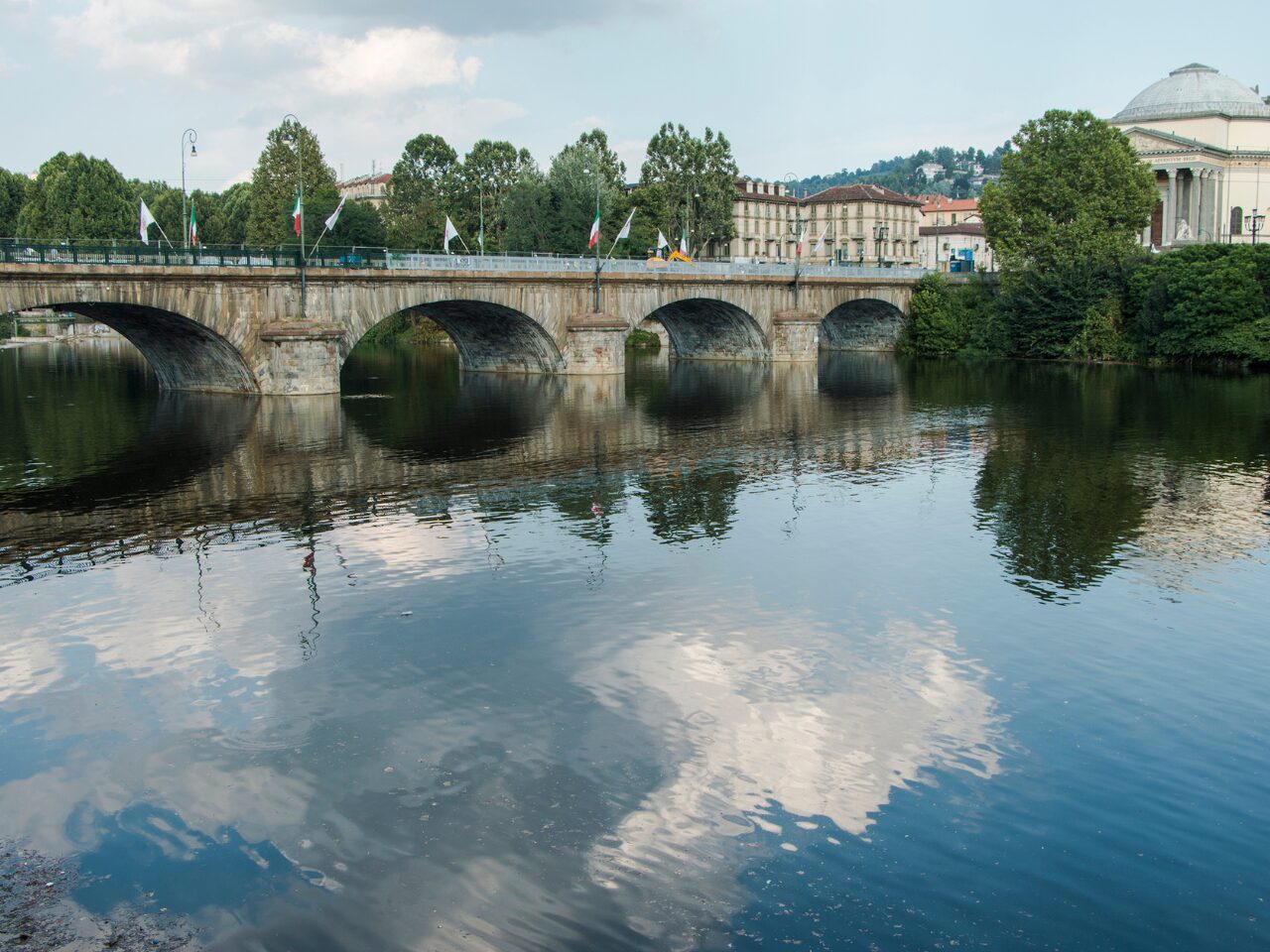
The imposing Castello Estense, built in 1385, stands as a powerful reminder of medieval Ferrara. Originally constructed as a defensive fortress after a dangerous popular revolt, it later became the magnificent ducal residence.
Medieval Ferrara boasted impressive walls that still encircle much of the city today. These walls, once purely defensive, now serve as a beloved green ring where locals and visitors alike enjoy cycling, walking, and relaxation.
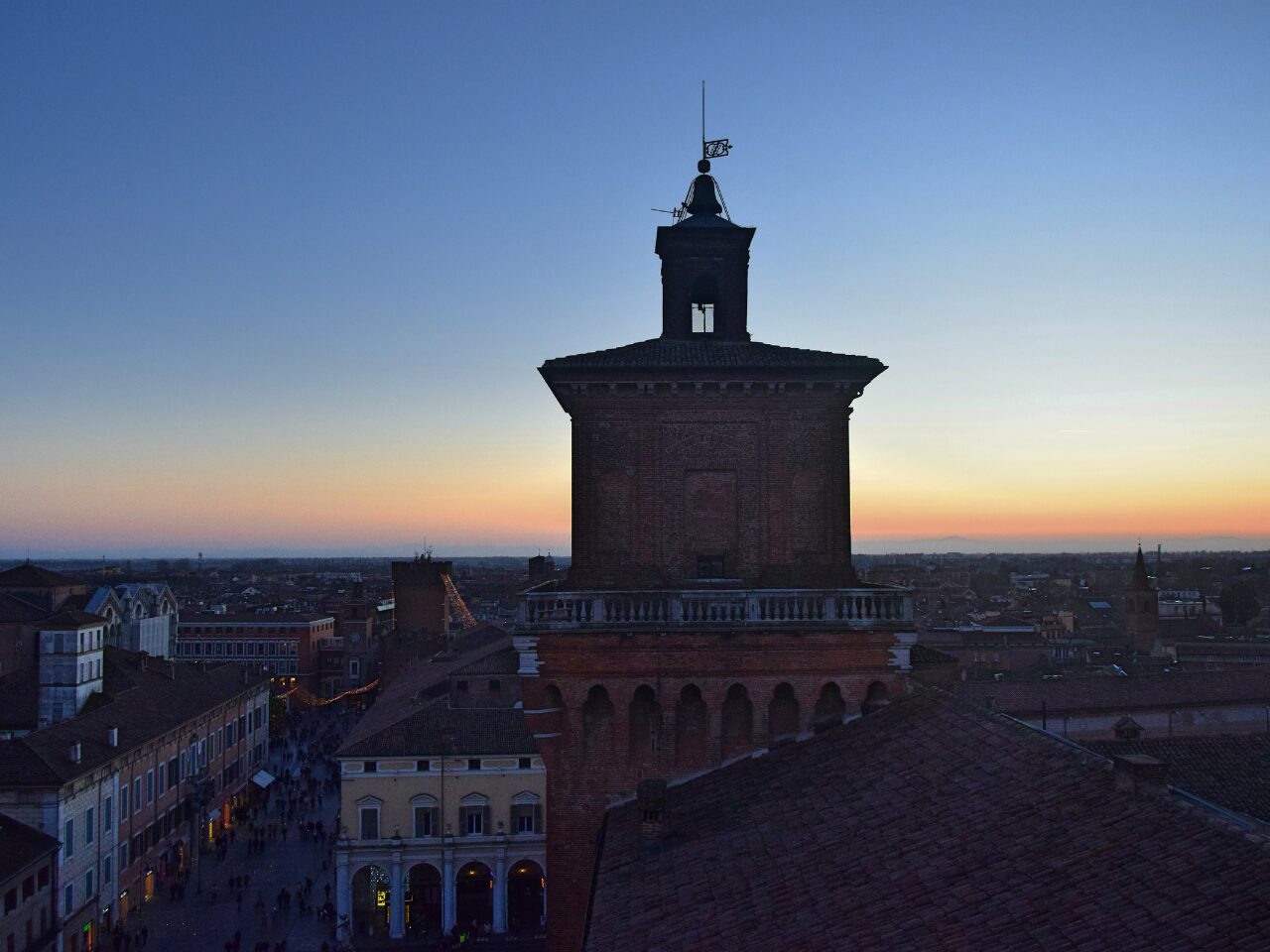
The city’s medieval cathedral, with its stunning Romanesque-Gothic façade, remains one of Italy’s most beautiful churches. Its marble reliefs depicting biblical scenes and the Last Judgment continue to captivate visitors.
Palazzo dei Diamanti: A Renaissance Jewel
The iconic Palazzo dei Diamanti stands as Ferrara’s architectural masterpiece and a perfect symbol of Renaissance creativity. Designed by Biagio Rossetti for Sigismondo d’Este, the building takes its name from over 8,500 marble blocks carved into pyramid shapes resembling diamonds.
I find the palace’s diamond-studded exterior absolutely mesmerizing. The way sunlight plays across these geometric shapes creates an ever-changing visual spectacle throughout the day.
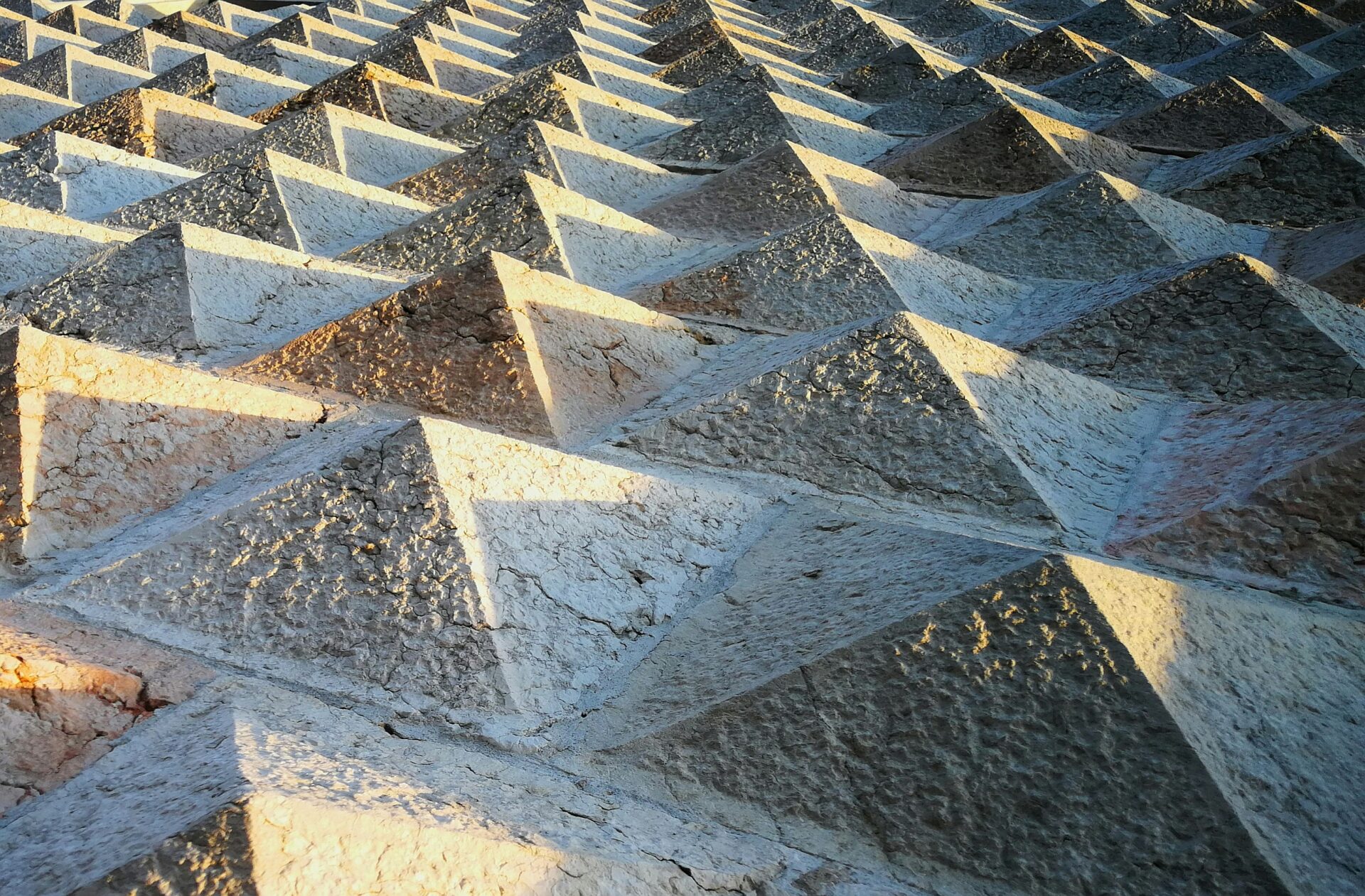
This innovative design wasn’t just decorative – it demonstrated the mathematical precision and harmony that defined Renaissance thinking.
Today, the palace houses the National Picture Gallery with its impressive collection of Ferrara School paintings. Works by masters like Cosmè Tura and Francesco del Cossa showcase the unique artistic style that flourished under Este patronage.
The building anchors the “Quadrivio degli Angeli,” the perfect intersection of four streets that exemplifies Ferrara’s revolutionary Renaissance urban planning approach.
Exploring the Green Ring
The ancient walls surrounding Ferrara offer an incredible cycling experience that combines history, nature, and exercise. This green belt circles the historic center, providing a perfect way to appreciate the Renaissance city from a different perspective while enjoying fresh air and beautiful landscapes.
Access Points and Accessibility
I found several convenient entry points to access the wall circuit during my visit. The most popular starting point is near the Este Castle, where bike rental shops cluster and clear signage directs visitors.

The entire 9-kilometer loop is remarkably accessible for almost everyone. Families with children can easily navigate the mostly flat terrain.
What impressed me most was how the city has adapted this historic structure for modern use. Ramps replace stairs at key points, making the walls accessible for wheelchairs and strollers.
Several parking areas allow visitors to drive close to the walls before beginning their exploration. Signs in multiple languages help orient visitors, and rest areas with benches appear regularly along the route.
Cycling Paths and E-Bike Options
The dedicated cycling paths along Ferrara’s walls are well-maintained and clearly marked. These smooth paths keep cyclists separate from pedestrian areas, reducing conflicts and enhancing safety for everyone enjoying the green ring.
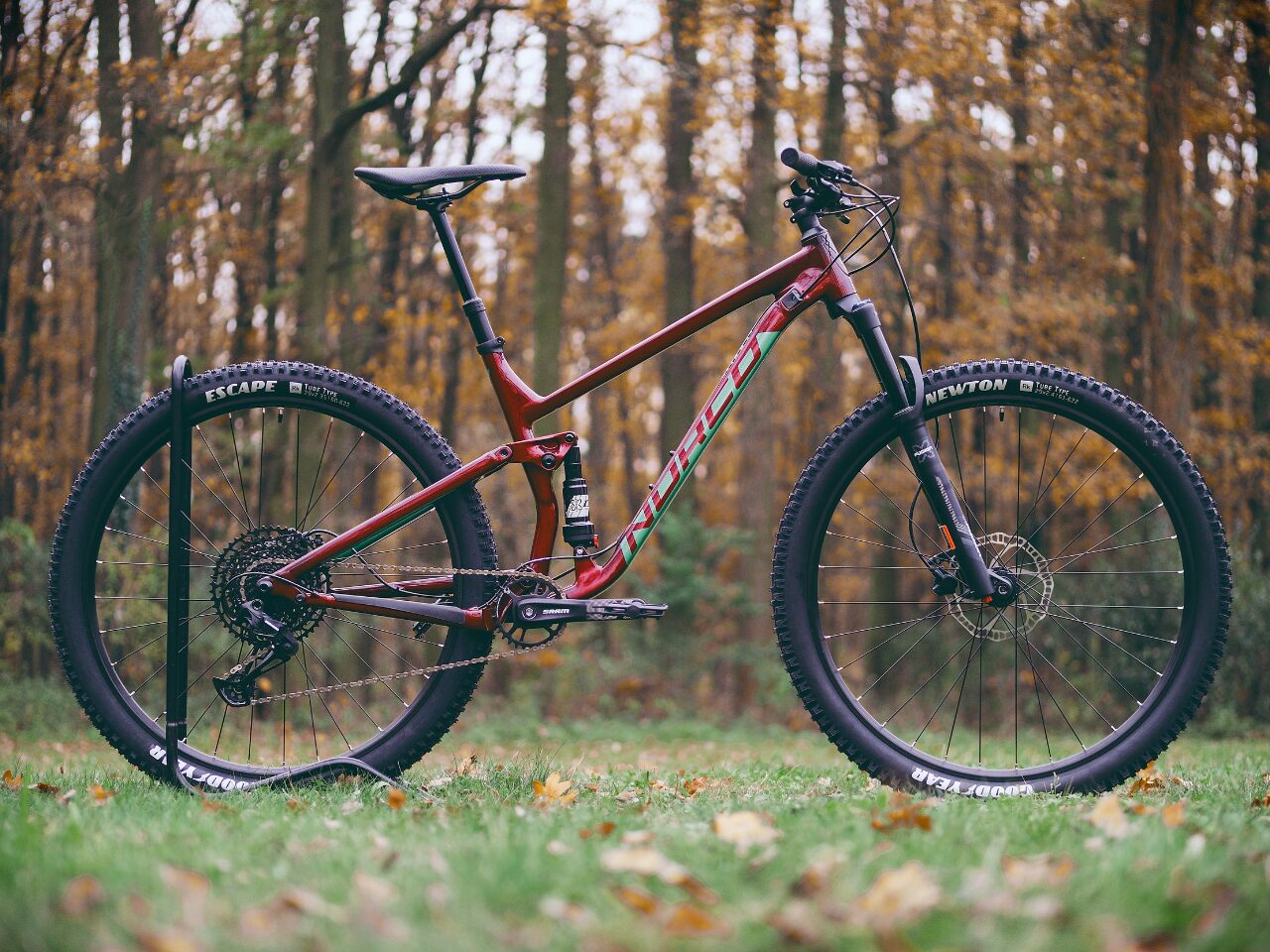
I opted to rent an e-bike from one of the many rental shops in the city center. This proved perfect for covering the entire circuit without tiring, especially on warmer days. Prices are reasonable – around €15 for a half-day rental.
Traditional bicycles work well too, given the gentle slopes. The path features distance markers every kilometer, helping riders track their progress. Several bike repair stations dot the route, offering tools for minor adjustments or tire inflation.
Panoramic Vistas and Statues
The elevated position of the wall path offers spectacular views across both the historic center and the countryside beyond. I paused often to photograph the red-tiled rooftops contrasting against the green parks below.
Several Renaissance-era statues and monuments appear along the route, particularly near the old gates. Information panels explain their historical significance.
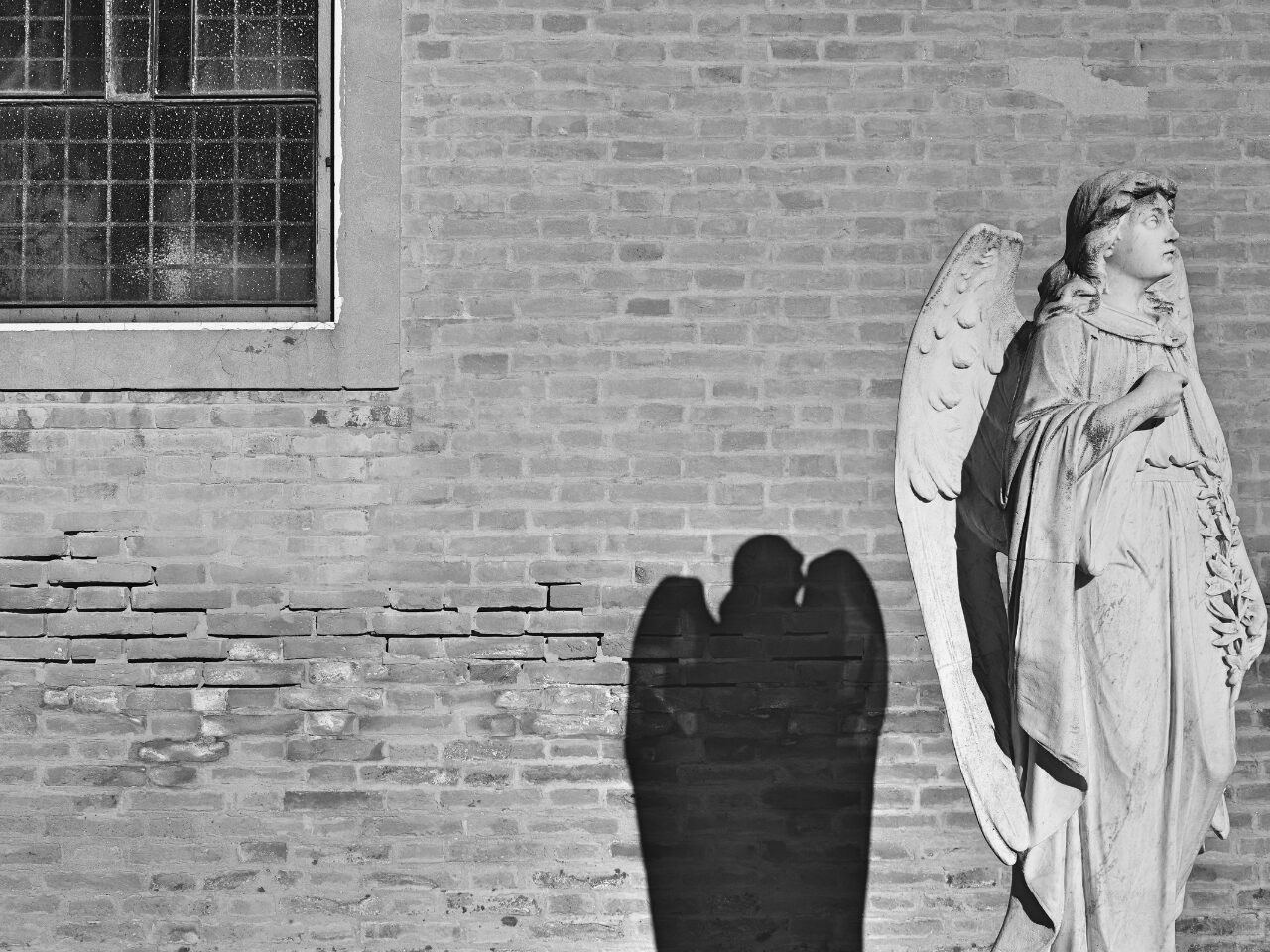
Spring brings an explosion of flowers along sections of the walls, with carefully maintained gardens showcasing seasonal blooms.
My favorite viewpoint came at sunset near the northwest corner, where the evening light bathes the medieval towers in golden hues. Benches positioned at scenic points invite cyclists to take breaks and appreciate the views.
Don’t miss the stretch near Porta degli Angeli, where ancient battlements remain remarkably intact alongside modern recreational spaces.
Cultural Landmarks Along the Ride
As I pedal along Ferrara’s magnificent walls, I’m surrounded by stunning Renaissance landmarks that tell the story of this incredible Italian city. The ancient fortifications offer more than just scenic views—they connect visitors to centuries of rich history and architectural brilliance.
Estense Castle: A Fortified Magnificence
The imposing Estense Castle stands as the defining symbol of Ferrara’s powerful past. Built in 1385, this moated fortress with four massive towers was originally designed to protect the Este family from potential uprisings.

I love pausing my bike ride to admire the castle’s reflection in the surrounding moat. The drawbridges and crenellated walls transport me back to medieval times, yet show clear Renaissance influences in their design.
Inside, you’ll find ornate apartments, frescoed halls, and a dungeon that once held prisoners. Don’t miss the Orange Garden on the first floor—a peaceful spot where nobles once strolled among citrus trees.
San Giorgio and Religious Heritage
The Cathedral of San Giorgio, just a short detour from the walls, showcases Ferrara’s religious importance during the Renaissance. Its marble façade blends Romanesque and Gothic styles, creating a striking impression as I approach.

The cathedral’s pink and white marble exterior features intricate carvings and sculptures that tell biblical stories. Inside, I’m always moved by the peaceful atmosphere and beautiful artwork, including frescoes by Renaissance masters.
Nearby, smaller churches dot the landscape with their bell towers rising above the city. Each offers a unique glimpse into Ferrara’s religious heritage through artwork, architecture, and historical significance that helped earn the city its UNESCO World Heritage status.
The Cycling Experience in Ferrara
Ferrara offers one of Italy’s most authentic cycling experiences. The city’s flat terrain, dedicated bike paths, and cycling culture make it a paradise for pedal enthusiasts of all skill levels.
Bicycle-Friendly Culture
Ferrara embraces bikes like few other Italian cities. I noticed immediately how locals use bicycles for daily commuting, shopping, and socializing. Nearly everyone cycles here—students, businesspeople, and elderly residents alike.
The city has earned its nickname “City of Bicycles” honestly. With over 85 kilometers of cycling paths and limited car access in the historic center, bikes rule the roads.

Rental options are plentiful throughout the city. I found several shops near the Este Castle offering daily rentals for about €15. The city’s bike-sharing program provides another convenient option with pickup stations scattered strategically around Ferrara.
What impressed me most was how cycling isn’t just transportation—it’s part of Ferrara’s identity and social fabric.
Seasonal Changes and Cycling
Each season brings a unique cycling experience in Ferrara. Spring remains my favorite time to explore the Renaissance walls as cherry blossoms and wildflowers dot the green spaces.
Summer mornings offer pleasant rides, though I recommend avoiding midday heat. Evening cycles cool down with refreshing breezes while providing stunning sunset views of the ancient walls.
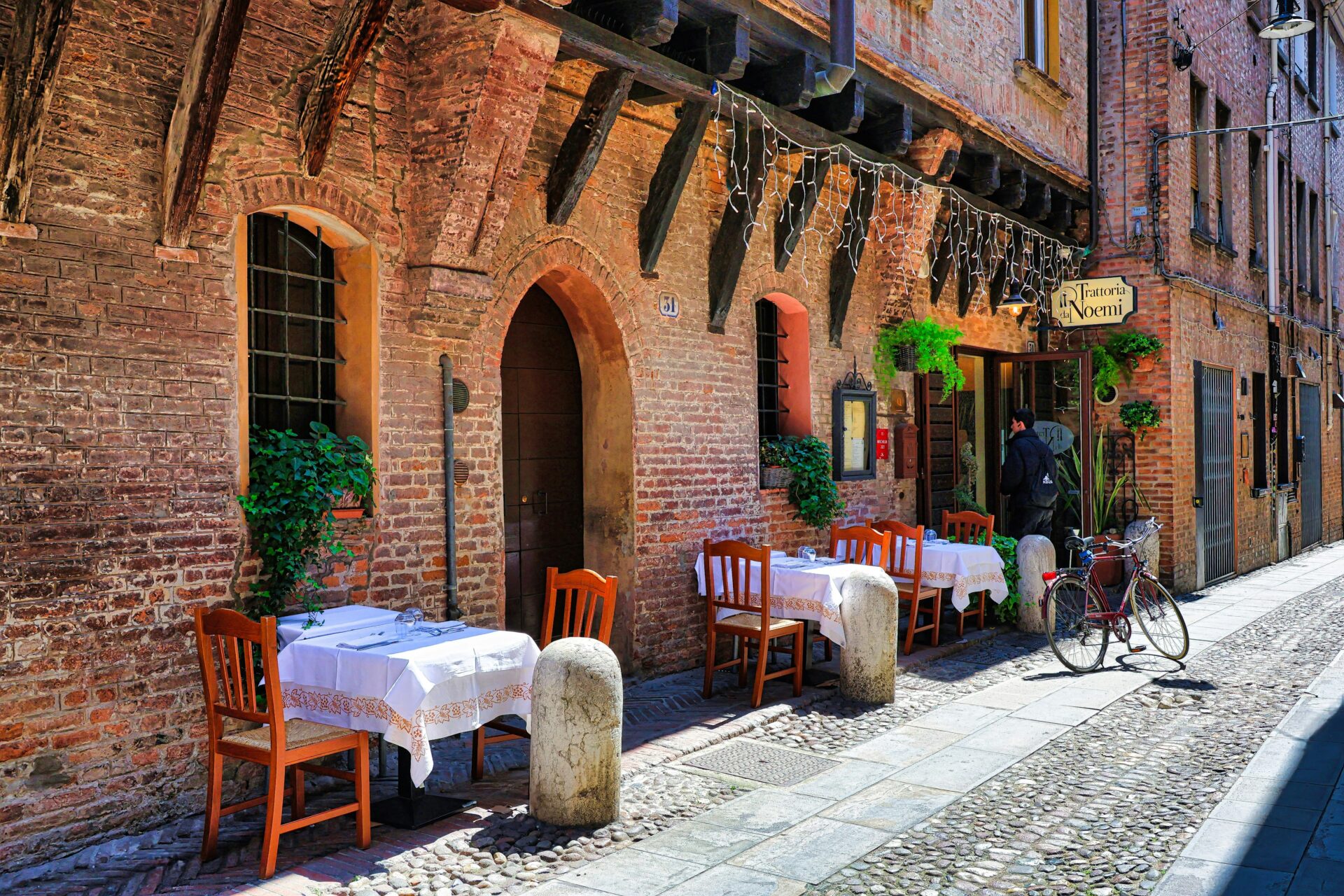
Fall transforms the landscape with golden hues. The crisp air makes longer routes more comfortable, and fewer tourists mean quieter paths along the 9km Renaissance Ring.
Winter cycling shouldn’t be overlooked either. Though cooler, the mild climate keeps routes accessible year-round. The walls and surrounding parks take on a peaceful quality with occasional misty mornings creating an almost magical atmosphere.
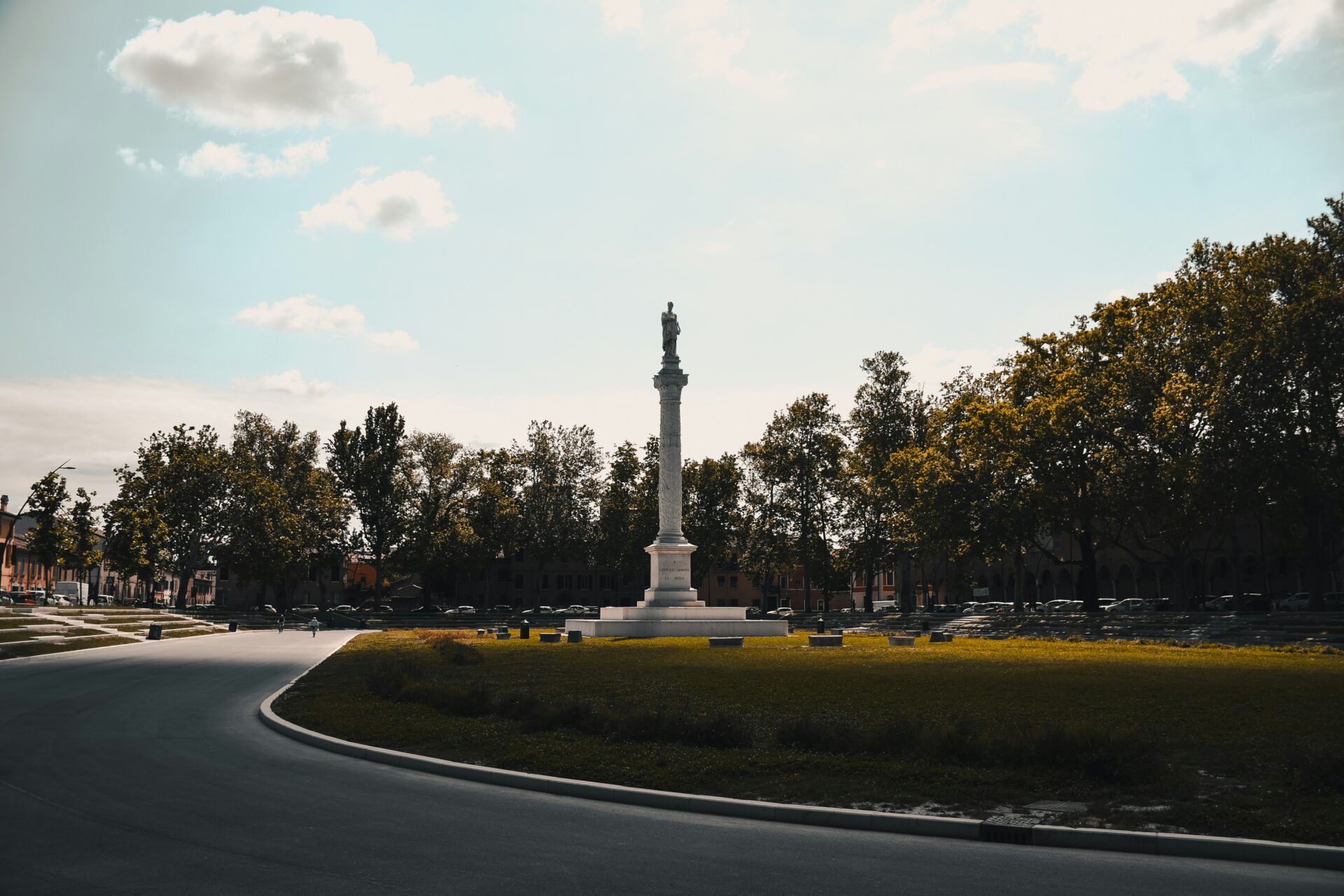
Seasonal events like the Palio di Ferrara in May and autumn wine festivals add special charm to cycling adventures throughout the year.
Beyond the Walls
While Ferrara’s historic walls offer an incredible cycling experience, venturing beyond opens up even more breathtaking routes for cycling enthusiasts seeking to expand their Italian adventure.
Extending Your Journey to Lake Garda
After exploring Ferrara’s Renaissance walls, I highly recommend pedaling northwest to Lake Garda. This stunning destination is about 140 km away, making for an ambitious but rewarding multi-day cycling trip.
The route takes you through the Po Valley’s picturesque countryside with its patchwork of fields and vineyards. Small villages dot the landscape, offering perfect rest stops with authentic local cuisine.
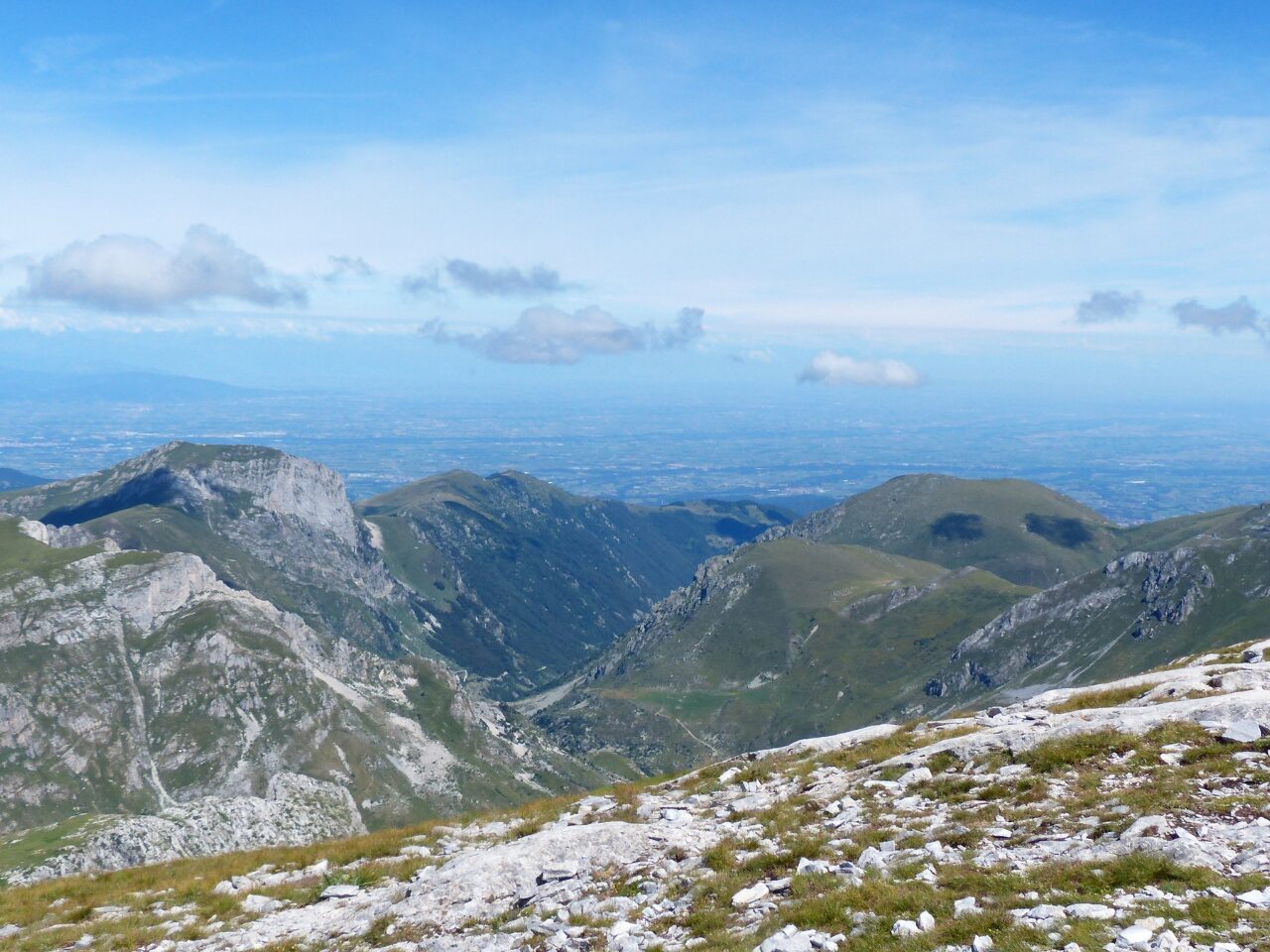
Lake Garda itself is a cyclist’s paradise with routes for every skill level. I particularly love the eastern shore path where mountains dramatically meet water. The lake’s microclimate creates ideal cycling conditions most of the year.
Don’t miss stopping in charming lakeside towns like Bardolino and Malcesine. Their colorful harbors and medieval streets provide welcome breaks from the saddle.

Ferrara to Florence: A Cyclist’s Dream
The journey from Ferrara to Florence offers one of Italy’s most fulfilling cycling experiences. This 150 km route takes you through the Apennine Mountains, creating unforgettable memories with each pedal stroke.
I recommend breaking this journey into 2-3 days. You can stay overnight in Bologna. The first day offers gentle terrain, while day two challenges with mountain climbs that reward with spectacular views.
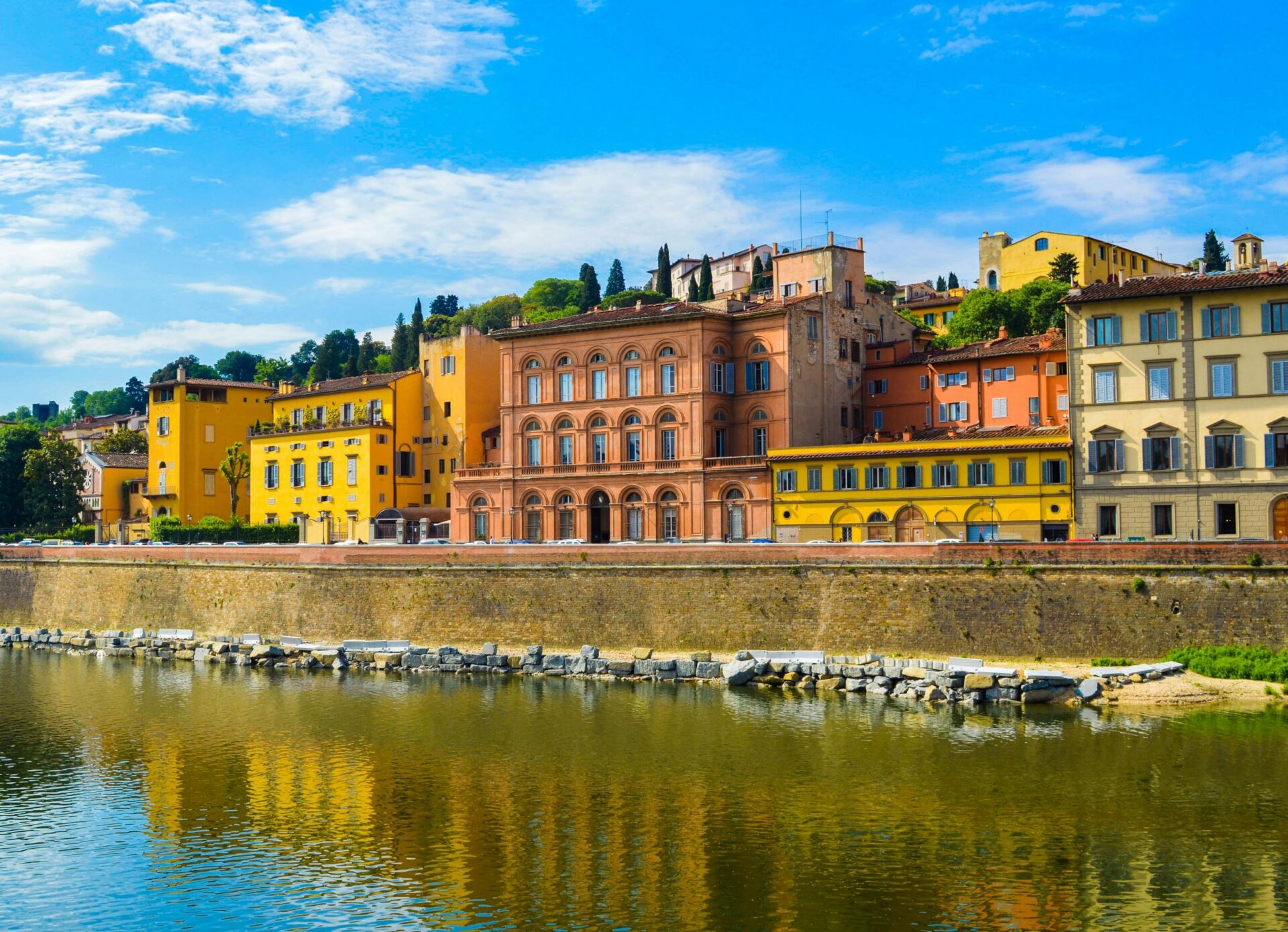
Florence welcomes cyclists with Renaissance splendor at every turn. After days of rural cycling, arriving at the Duomo feels truly magical. The contrast between Ferrara’s elegant walls and Florence’s dramatic architecture tells Italy’s diverse story.
Bike-friendly accommodations are plentiful in Florence. I suggest staying near the historic center to easily explore the city’s treasures on two wheels or foot after your journey.

